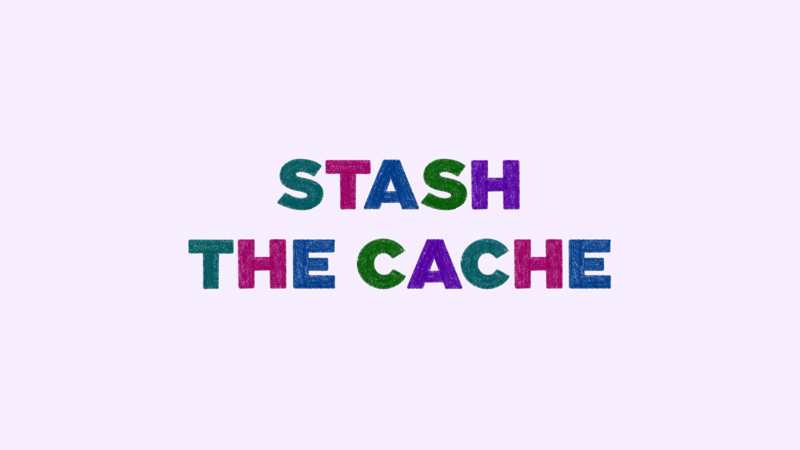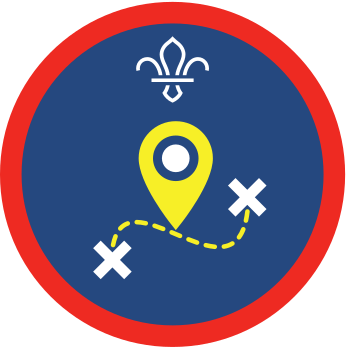
Stash the cache
You’ll need
- A4 paper
- Coloured pens or pencils
- Access to the internet
- Suitable items to place in the caches
- Waterproof boxes for caches such as plastic takeaway containers
Before you begin
- Before the session, ask everyone to bring along a small trinket or toy that they wouldn’t mind giving away. Christmas cracker toys would be ideal, as would old badges, painted stones and seashells. Bring along a few spare odds and ends in case anyone forgets.
- Look closely at the Geocaching website for guidance on the kind of items that can be hidden in caches. It states that cache items shouldn’t be dangerous or perishable. That means no knives and no sandwiches! Any edible, scented, liquid or meltable items should also be excluded.
- Work out a suitable time limit for this activity, a place to start and a place to meet back after. The meeting place is ideal, if it’s close enough to your cache locations.
- Carefully risk assess the area in which this activity is to be run, especially where there’s tricky terrain and roads. Check that your adult to young person ratios are adequate.
Run the activity
- Explain that everyone will be teaming up to create some hidden treasure for other treasure hunters to find. Gather together all of the small items that everyone has brought along with them, somewhere central where everyone can see. Try to group similar items like badges, natural objects and toys together.
- Have a look through the objects and encourage everyone to ask questions about interesting items.
- Split into small teams of around four people. Give each team two cache containers that can be sealed and opened.
- Teams should take it in turns to select items from those gathered to go in their containers. Encourage everyone to collect a selection of natural items, toys, badges and other varieties from what’s available.
- Prepare logbooks for the caches. These are for visitors to the cache to record that they found the treasure. Make these from folded pages stapled together like a booklet or from blank notebooks. Teams should write ‘Geocache logbook’ or similar on the front of their finished logbooks, and could decorate them too, if there’s time. For guidance on what should be in the logbook, see the Geocaching website’s hiding guidelines.
- Place the logbooks and cache items inside the containers and seal them. Now, start thinking about locations to hide the cache. Full guidelines on hiding geocaches can be found on the Geocaching website and the following should always be considered:
-
- Why you are bringing the player to that spot. Is it a beautiful spot in nature, does it have historical significance, or is there something interesting to see?
- The geocache shouldn’t be buried and shouldn’t damage the location in which it’s hidden. For example, it cannot be nailed to a tree.
- It should be in a place that you can access regularly to check and maintain the cache, on publicly accessible land.
- It shouldn’t be too close to another cache, as treasure hunters might stumble upon the wrong one! Try to settle on a location at least 200m from anyone else’s.
- Teams should use maps to plot how treasure hunters might find their way to the potential location of their cache.
- When everyone’s settled on a hiding place and checked its suitability, teams should take the caches out to the locations and hide them, taking care not to disturb the environment or any private property as they go. Upon returning, they should use the guidance on the Geocaching website to sign up and upload the information page for the new geocache for approval.
Reflection
It’s important to remember why we leave caches for other people to find. We don’t leave items that we know will harm the environment or encroach onto someone’s private property, like their garden. We want to do the opposite: to bring treasure hunters on a journey to a location not simply to find the cache, but also to see the location itself. This shows everyone why we should value the outdoors, and keeps them active too! Exercise aside, why might it be better to take people to pleasant outdoor locations, rather than showing them photographs? What other senses might they use at the location that a picture can’t recreate?
Safety
All activities must be safely managed. You must complete a thorough risk assessment and take appropriate steps to reduce risk. Use the safety checklist to help you plan and risk assess your activity. Always get approval for the activity, and have suitable supervision and an InTouch process.
- Have everyone think carefully about the guidelines on hiding caches to come up with more ingenious hiding places in the local area. Teams could make their own sturdy, waterproof containers and personalise them, so that treasure hunters recognise the cache when they find it. They could also try to put together a multi-cache by setting out a series of clues for treasure hunters to follow to find the hidden cache.
- Teams could head out together to hide their caches. This might help everyone find a better location than they could come up with off the top of their heads. Just make sure everyone takes care to space out when placing their caches in the locations, so they’re not mixed up. Try to stash the caches at least 200m apart, where you can. Wooded areas, meadows, countryside, parks and pedestrianised town centres might be good places to start.
Challenge the teams to make their hiding spots accessible for treasure hunters with additional needs. Encourage them to think about how those with additional needs might access the cache. This might mean choosing a hiding place above ground level or at a certain height. It may be better to go out and assess the terrain and obstacles on a route before placing the cache, in case the spot turns out to be inaccessible.
All Scout activities should be inclusive and accessible.
Remember to check back regularly on the caches you’ve hidden. If you’re placing more caches, you could add a theme or puzzles to them, so that treasure hunters recognise your handiwork!
This is an opportunity for young people with experience geocaching to share their knowledge with others and help the teams decide where best to hide their caches.
